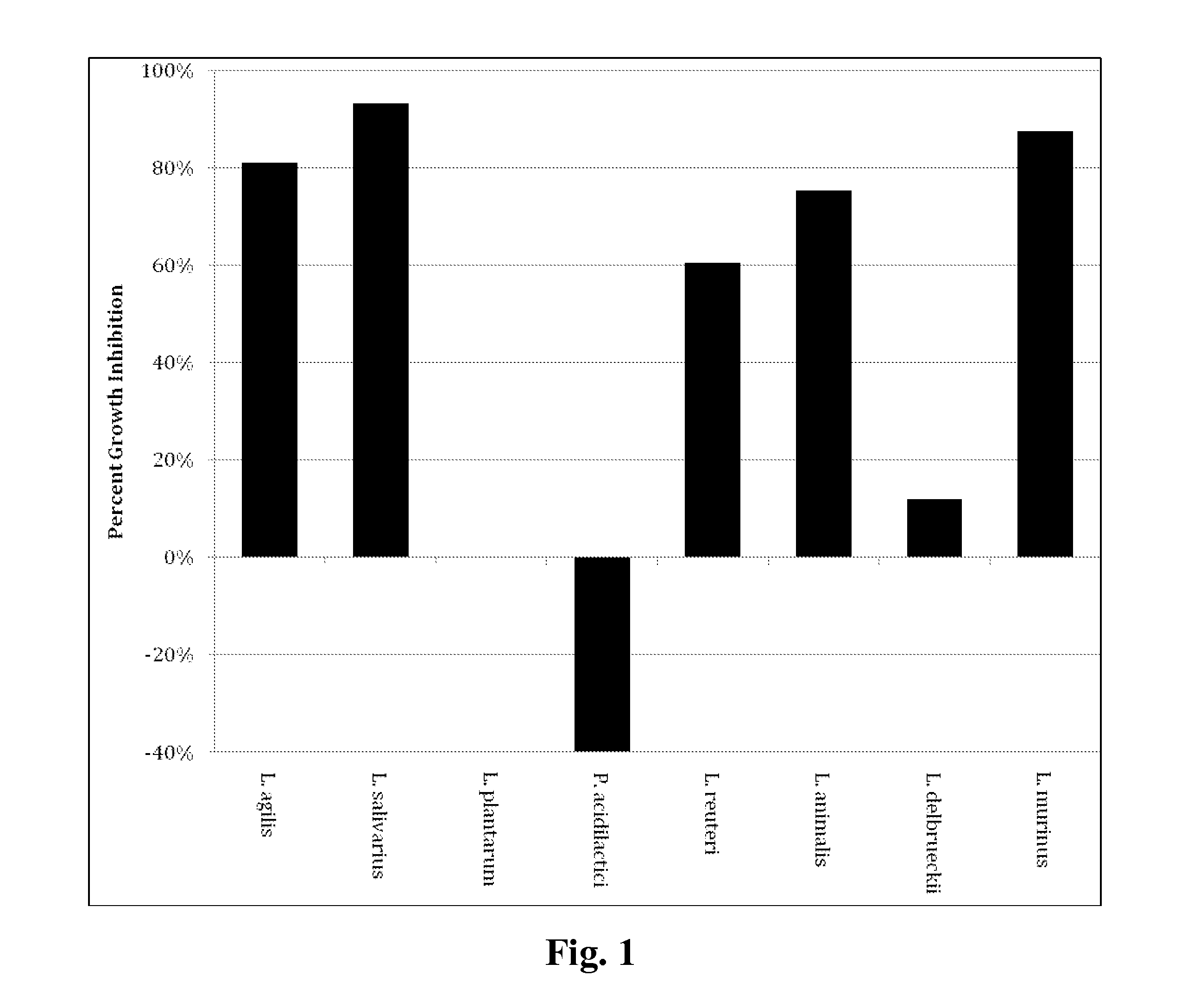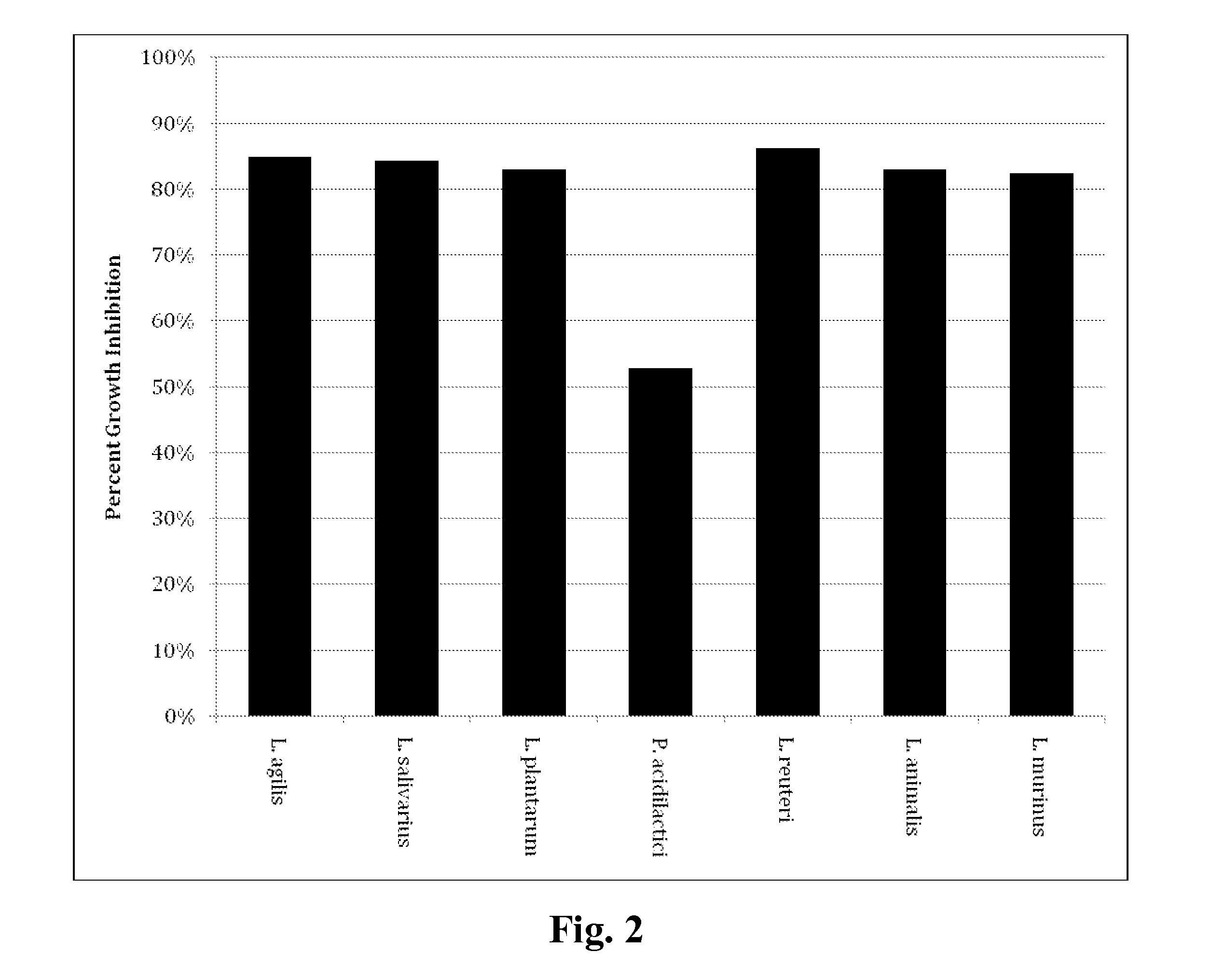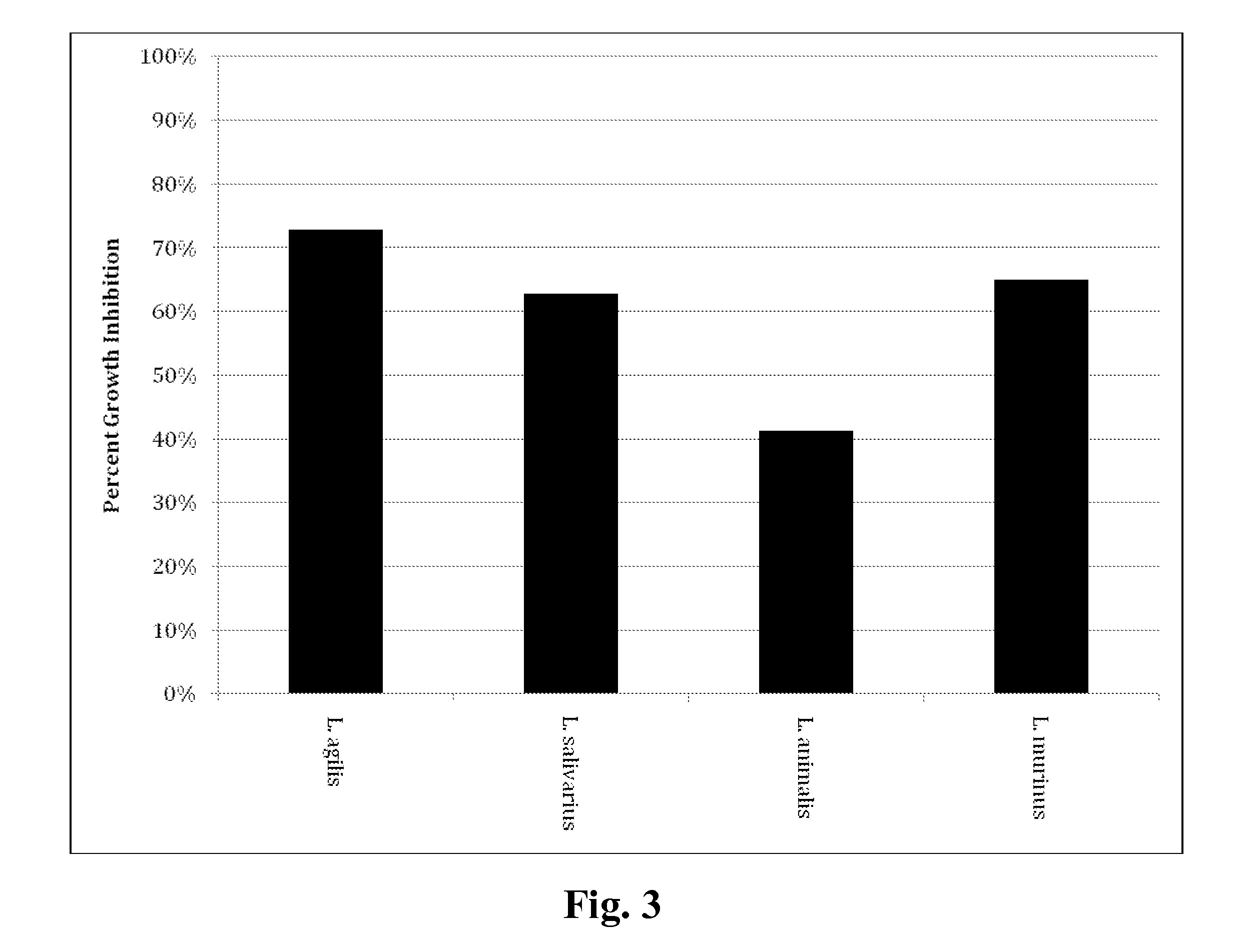Microbial product containing multiple microorganisms
a technology of microorganisms and products, applied in the directions of bacteria material medical ingredients, antibacterial agents, biocide, etc., can solve the problems of high cost of heifer replacement, high cost of rearing and/or replacing heifers to maintain or increase herd size, and economic burdens facing dairy farmers
- Summary
- Abstract
- Description
- Claims
- Application Information
AI Technical Summary
Benefits of technology
Problems solved by technology
Method used
Image
Examples
example 1
Preparation of Reagents
[0133]a. Lactobacilli MRS Agar and Broth
[0134]Lactobacilli MRS agar and broth are recommended for the use in the isolation of Lactobacillus species. Lactobacilli MRS agar and broth are based on the formulations of de Man et al., J. Appl. Bacteriol., 23:130, 1960. Difco™& BBL™ Manual, 2nd Edition. The agar and broth were demonstrated by de Man et al., to support Lactobacilli growth from oral, fecal dairy and other sources. Lactobacilli MRS Agar and broth contain peptone and dextrose, both of which supply nitrogen, carbon and other elements necessary for growth. Polysorbate 80, acetate, magnesium and manganese provide growth factors for culturing a variety of lactobacilli.
[0135]In brief, to generate Lactobacilli MRS Agar, into one liter of distilled water: 10.0 g proteose peptone No. 3, 10.0 g beef extract, 5.0 g yeast extract, 20.0 g dextrose, 1.0 g polysorbate 80, 2.0 g ammonium citrate, 5.0 g sodium acetate, 0.1 g magnesium sulfate, 0.05 g manganese sulfate, ...
example 2
[0142]a. Growth Inhibition of E. coli by Lactic Acid Producing Bacteria
[0143]Tubes containing an MRS medium were inoculated with approximately 1×104 viable cells (based culture optical density) of a selected strain of E. coli and 1×104 viable cells (based culture optical density) of the challenging lactic acid bacterium strain. The following species of probiotic lactic acid producing bacteria were used: Lactobacillus agilis, Lactobacillus agilis, Lactobacillus delbrueckii, Lactobacillus murinus, Lactobacillus plantarum, Lactobacillus reuteri, Lactobacillus salivarius and Pediococcus acidilactici.
[0144]E. coli strain 1 was a lab isolate known as CKYL1 and strain 2, available from ATCC was 25922. The third strain was O157:H7. Tubes were then placed into a water bath at 37° C. and incubated for 6 hours. After incubation, tubes were serially diluted and 100 μA spread onto Luria-Bertani plates to enumerate viable E. coli. The percent E. coli growth inhibition was calculated as the diffe...
PUM
 Login to View More
Login to View More Abstract
Description
Claims
Application Information
 Login to View More
Login to View More - R&D
- Intellectual Property
- Life Sciences
- Materials
- Tech Scout
- Unparalleled Data Quality
- Higher Quality Content
- 60% Fewer Hallucinations
Browse by: Latest US Patents, China's latest patents, Technical Efficacy Thesaurus, Application Domain, Technology Topic, Popular Technical Reports.
© 2025 PatSnap. All rights reserved.Legal|Privacy policy|Modern Slavery Act Transparency Statement|Sitemap|About US| Contact US: help@patsnap.com



